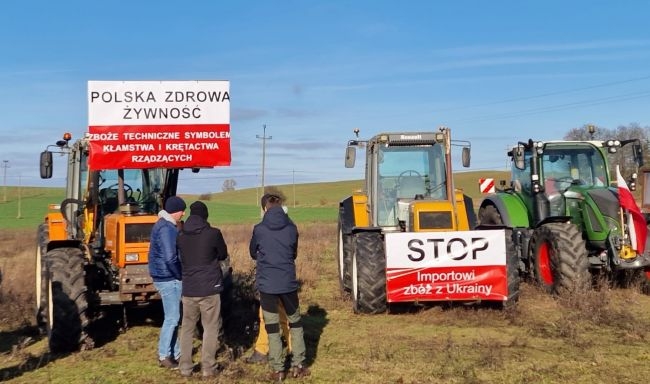The most common myths about farmers and agriculture in Poland

An expert in the field of Ukrainian-Polish trade, Confidence.Trading co-founder Yuliy Zorya, who lived and worked in Poland for 10 years, told Latifundist.com about the agricultural sector of Ukraine's western neighbor and the fact that Ukrainians have a misconception about Polish farmers.
It turns out that there are not 1.3 million real farmers in Poland, as is believed, but only 300-400 thousand. The rest (almost 70%) are fictitious farmers who cultivate the land only on paper in order to receive subsidies from the budget. Therefore, the average area of land cultivated by real farmers is not a fictitious 11 hectares, but 30-50 hectares.
Over the past 8 years, the system of encouraging people to farm by providing subsidies and preferences has actually led to an unfair distribution of taxes, where some people get benefits while leaving others to work the land. At the same time, the PiS party, which introduced this system, is now inciting protests by local farmers and inventing accusations against Ukraine and the EU.
As of June 2023, losses from growing wheat in Poland amounted to 430 euros/ha, despite the fact that the amount of subsidies was 1,300 euros/ha. That is, for each hectare, the farmer is paid twice as much as the grain grown by him is worth. By then buying agricultural products, European consumers actually pay farmers for grain a second time.
In 2023, 7.2 million hectares were sown with cereals in Poland, and the average yield of wheat was 5 t/ha. In Ukraine, the yield is 4.5 t/ha, and economic efficiency is achieved by a large area of farms.
Growing grain on an area of 30-50 hectares using modern technologies requires 30-50 days of work per year. That is, for about 10-11 months a year, a farmer growing grain on an average plot in Poland can do other things. This despite the fact that 70% of Polish farmers are fictitious anyway.
Let's consider the claims of farmers to the requirements of the "European Green Deal" program, which supposedly makes agricultural production uncompetitive. The program is indeed dubious, but farmers are compensated at the expense of taxpayers not only for the entire cost of grain production, taking into account the requirements of the program, but even more. The reason for the unprofitability of grain in the EU is low world prices and small areas on which farming is conducted. Therefore, a farmer spends 30-50 days a year growing grain on 30-50 hectares, and spends the rest of the time protesting.
Farmers' protests are incited by the PiS party, which was in power for 8 years, but could not achieve good economic indicators. According to the World Bank, in terms of GDP per capita, Poland is among the 20% of the poorest countries (together with Romania, Bulgaria, Hungary and Croatia). Moreover, it is ahead of Greece, Latvia, Lithuania and Estonia. Goods and services are produced per capita in Poland for $18,688, and on average in the EU - for $37,433, that is, the average Pole is twice as poor as an EU citizen, which does not satisfy society. On the eve of the recent elections, the PiS party blamed Ukraine for the current situation. All the government-controlled mass media accused Ukraine of high inflation and falling prices for agricultural products, although these factors contradict each other, as a decrease in food prices reduces inflation.
PiS lost the elections, but the negativity towards Ukraine remained in the minds of Polish society. Currently, PiS is trying to get revenge in the elections to local self-government bodies, which will be held in April 2024, so it continues to destabilize the country through protests to show that the new government does not protect the interests of Poles.


